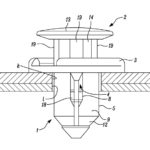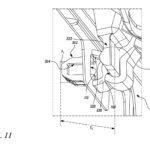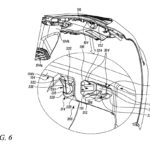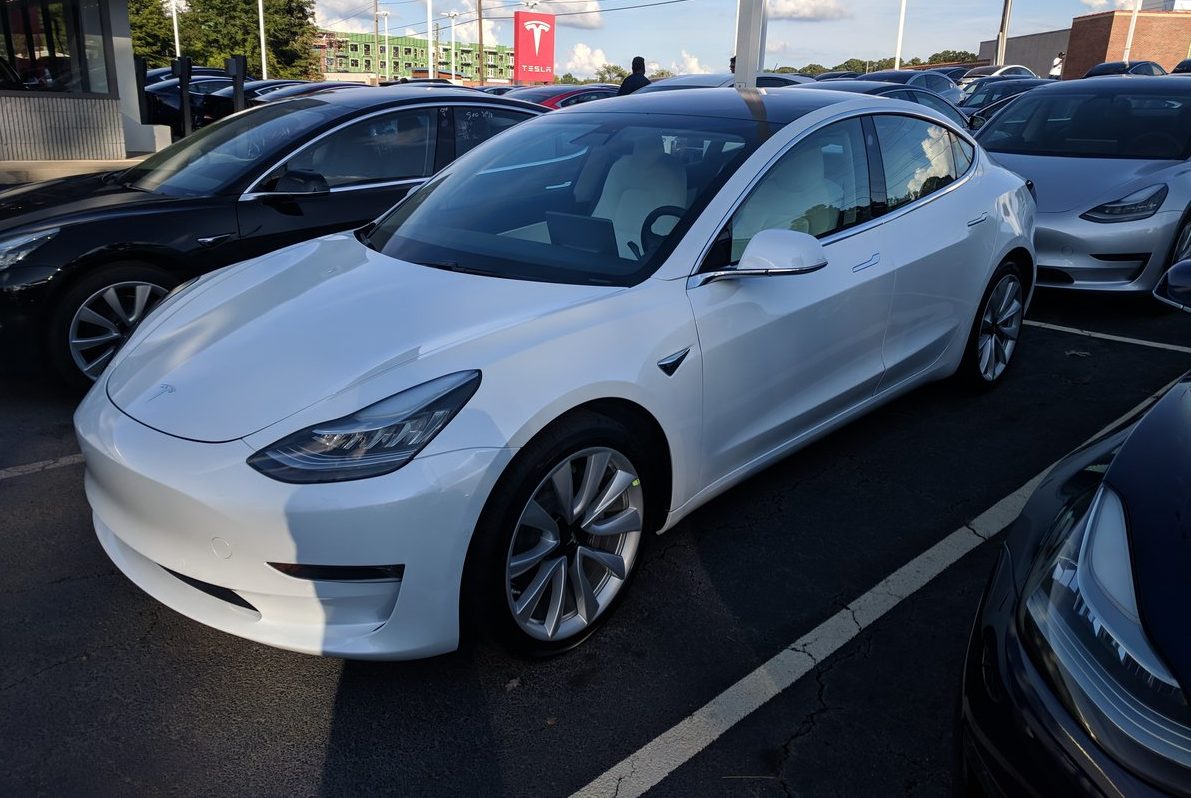

News
Tesla patent addresses panel gaps using clever clamping assembly
The build quality of Tesla’s vehicles would likely see a notable improvement in the near future. As revealed in a recently published patent, the company is working on a new type of clamping assembly that allows some flexibility between panels during manufacturing. With such a system in place, gaps between a vehicle’s panels could be adjusted and aligned during the assembly process.
Tesla’s newly published patent, titled “Clamping Assembly for Securing Together a Pair of Adjacently Located Panels,” describes a simple yet clever way to address misaligned body panels. Tesla notes that conventional clamps, which are usually utilized to attach body panels to a vehicle’s frame, are unable to connect panels and their individual tolerances effectively due to their rigid structure.
“Although (conventional clamps) can be used to secure adjacently located parts to one another, the clamp does not account for parts that have large manufacturing tolerances or parts that must not be fixed in at least one direction (that is there must be play between the parts). Attempting to use a traditional clamp to secure two parts that must have some play between them may introduce unsightly gaps and/or overlaps between the parts, reducing the aesthetic appearance upon assembly.”
- [Credit: US Patent Office]
- [Credit: US Patent Office]
Diagrams depicting Tesla’s design for its new clamping assembly. [Credit: US Patent Office]
Tesla’s patent outlines a new type of clamping assembly that is more flexible. Such a system enables Tesla to adjust panels during assembly, allowing the company to address any possible misaligned panels before the vehicle is sent off to delivery. Tesla explains the rationale of its new clamp as follows.
“The present invention was derived in light of the foregoing challenges, and it is an object of the present invention to provide a clamping assembly that provides flexibility in securing parts that are manufactured to larger dimensional tolerances and in which play is necessary between adjacent parts during, or after, assembly. The clamping assembly of the present invention can accommodate misalignment of the part or parts owing to variances in one or both parts during manufacture and/or necessary play between the parts by allowing flexibility in adjusting the positions of the parts relative to one another in one direction while still securing the parts to one another. That is, the clamping assembly secures together a pair of manufactured parts, in which the manufactured parts require play along at least one direction while confining the movement of the parts in a second direction.
“According to certain embodiments of the present invention, the clamping assembly includes a retainer member. The retainer member may have a U-shape groove that allows for the insertion of a tab member and a narrow retaining throat that confines a bulbous portion of the tab member in multiple directions. For example, once inserted into the groove of the retainer member, the tab member with the bulbous portion is confined from moving vertically and horizontally. Once inserted into the groove of the retainer member, movement of the tab member with the bulbous portion is possible by sliding the tab member and the bulbous portion thereof relative to a plane P 2 of the groove, i.e., by sliding the tab member and the bulbous portion into or out of the page. Thus, with use of the clamping assembly disclosed herein, some play or flexibility between two panels is possible, and the panels can be adjusted relative to one another during assembly.”
- [Credit: US Patent Office]
- [Credit: US Patent Office]
Diagrams depicting Tesla’s design for its new clamping assembly. [Credit: US Patent Office]
Tesla has been challenged with misaligned panels on its vehicles in the past. When Detroit’s Sandy Munro started his teardown of an early production Model 3, for one, the auto veteran lamented that the vehicle’s panel gaps were so inconsistent, they were reminiscent of a Kia from the 90s. Munro was eventually blown away by the Model 3’s battery, tech, ride quality, and performance, but his criticism of the car’s build quality were notable until he completed his analysis. Tesla later issued a response to Munro’s criticism of the early production Model 3’s build quality, stating that “the standard deviation of all gaps and offsets across the entire car has improved, on average, by nearly 40%, with particular gap improvements visible in the area of the trunk, rear lamps and rear quarter panel.”
A letter to Tesla employees sent last April revealed that Elon Musk is taking the issue of misaligned panels very seriously. In his message, Musk noted that while the build quality of the company’s vehicles continues to improve, Tesla must strive to push harder in ensuring that its electric cars have design tolerances that are a factor of ten better than any other vehicle in the auto industry.
“Most of the design tolerances of the Model 3 are already better than any other car in the world. Soon, they will all be better. This is not enough. We will keep going until the Model 3 build precision is a factor of ten better than any other car in the world. I am not kidding. Our car needs to be designed and built with such accuracy and precision that, if an owner measures dimensions, panel gaps, and flushness, and their measurements don’t match the Model 3 specs, it just means that their measuring tape is wrong,” Musk wrote.
There is no denying that misaligned panels are an issue for Tesla’s electric cars, particularly early production models produced in the past. In a way, such issues are part of Tesla’s growing pains, considering that mastering panel alignment is among the more basic aspects of vehicle manufacturing. That said, Elon Musk’s unrelenting stance on improving build quality, together with clever ways to address and avoid misaligned panels, might soon allow the company to shake off its panel gap issues altogether.

News
Tesla Semi program Director teases major improvements

Tesla Semi Program Director Dan Priestly teased the major improvements to the all-electric Class 8 truck on Thursday night, following the company’s decision to overhaul the design earlier this year.
Priestley said he drove the Semi on Thursday, and the improvements appear to be welcomed by one of the minds behind the project. “Our customers are going to love it,” he concluded.
Just drove the redesigned Semi. Our customers are going to love it. https://t.co/KZ88sf1CDL
— Dan Priestley (@danWpriestley) December 19, 2025
The small detail does not seem like much, but it is coming from someone who has been involved in the development of the truck from A to Z. Priestley has been involved in the Semi program since November 2015 and has slowly worked his way through the ranks, and currently stands as the Director of the program.
Tesla Semi undergoes major redesign as dedicated factory preps for deliveries
Tesla made some major changes to the Semi design as it announced at the 2025 Annual Shareholder Meeting that it changed the look and design to welcome improvements in efficiency.
Initially, Tesla adopted the blade-like light bar for the Semi, similar to the one that is present on the Model Y Premium and the Cybertruck.
Additionally, there are some slight aesthetic changes to help with efficiency, including a redesigned bumper with improved aero channels, a smaller wraparound windshield, and a smoother roofline for better aero performance.
All of these changes came as the company’s Semi Factory, which is located on Gigafactory Nevada’s property, was finishing up construction in preparation for initial production phases, as Tesla is planning to ramp up manufacturing next year. CEO Elon Musk has said the Semi has attracted “ridiculous demand.”
The Semi has already gathered many large companies that have signed up to buy units, including Frito-Lay and PepsiCo., which have been helping Tesla test the vehicle in a pilot program to test range, efficiency, and other important metrics that will be a major selling point.
Tesla will be the Semi’s first user, though, and the truck will help solve some of the company’s logistics needs in the coming years.
News
Tesla dominates in the UK with Model Y and Model 3 leading the way
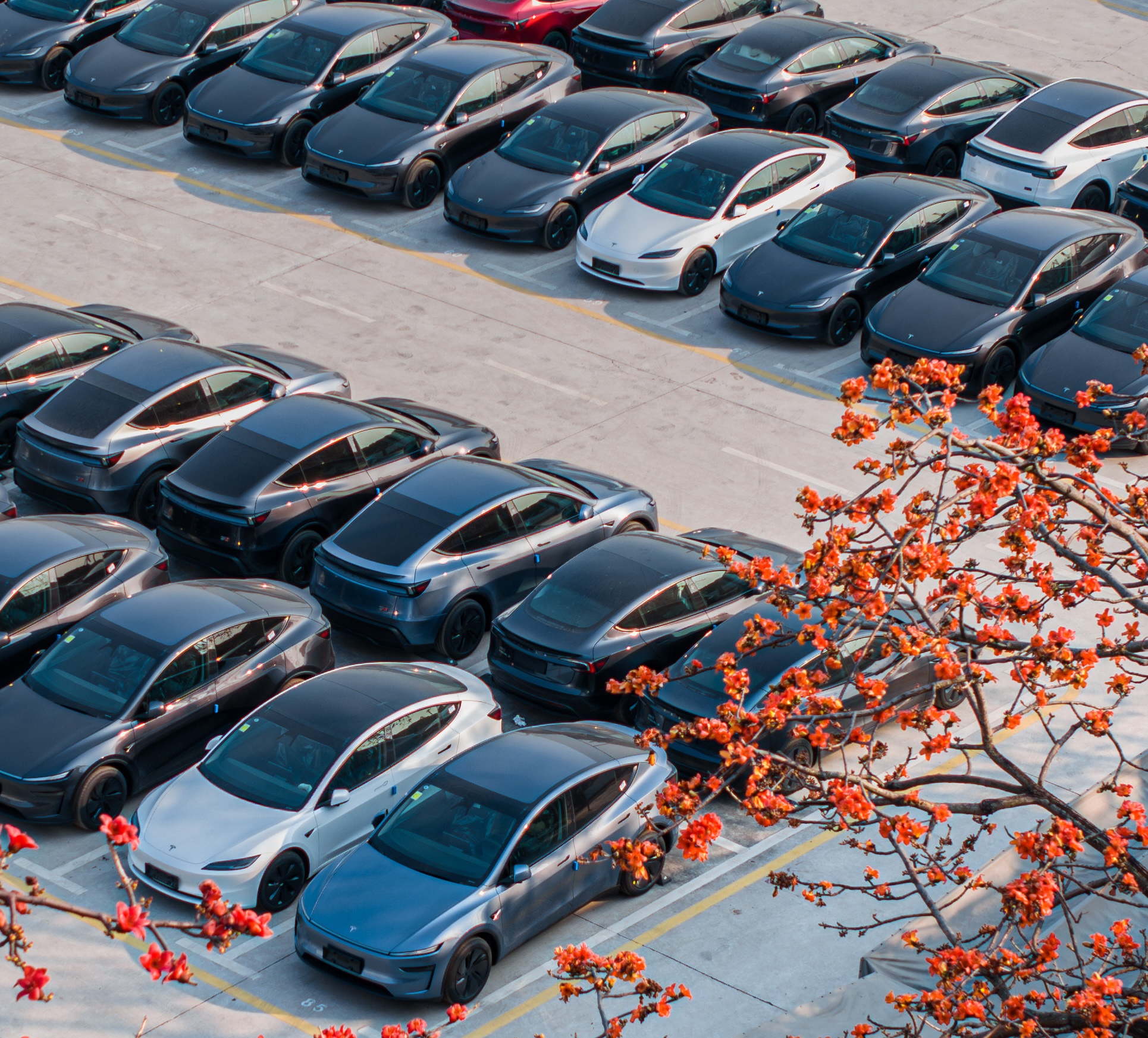
Tesla is dominating in the United Kingdom so far through 2025, and with about two weeks left in the year, the Model Y and Model 3 are leading the way.
The Model Y and Model 3 are the two best-selling electric vehicles in the United Kingdom, which is comprised of England, Scotland, Wales, and Northern Ireland, and it’s not particularly close.
According to data gathered by EU-EVs, the Model Y is sitting at 18,890 units for the year, while the Model 3 is slightly behind with 16,361 sales for the year so far.
The next best-selling EV is the Audi Q4 e-tron at 10,287 units, lagging significantly behind but ahead of other models like the BMW i4 and the Audi Q6 e-tron.
GOOD NEWS 🇬🇧 Tesla is absolutely crushing the UK electric vehicle market in 2025 💥
The numbers are in, and the dominance is clear. With an impressive amount of 42,270 vehicles delivered year-to-date, the brand now commands a solid 9.6% market share of the total auto market 🆒… pic.twitter.com/dkiGX9kzd0
— Ming (@tslaming) December 18, 2025
The Model Y has tasted significant success in the global market, but it has dominated in large markets like Europe and the United States.
For years, it’s been a car that has fit the bill of exactly what consumers need: a perfect combination of luxury, space, and sustainability.
Both vehicles are going to see decreases in sales compared to 2024; the Model Y was the best-selling car last year, but it sold 32,610 units in the UK. Meanwhile, the Model 3 had reached 17,272 units, which will keep it right on par with last year.
Tesla sold 50,090 units in the market last year, and it’s about 8,000 units shy of last year’s pace. It also had a stronger market share last year with 13.2 percent of the sales in the market. With two weeks left in 2025, Tesla has a 9.6 percent market share, leading Volkswagen with 8 percent.
The company likely felt some impact from CEO Elon Musk’s involvement with the Trump administration and, more specifically, his role with DOGE. However, it is worth mentioning that some months saw stronger consumer demand than others. For example, sales were up over 20 percent in February. A 14 percent increase followed this in June.
News
Tesla Insurance officially expands to new U.S. state
Tesla’s in-house Insurance program first launched back in late 2019, offering a new way to insure the vehicles that was potentially less expensive and could alleviate a lot of the issues people had with claims, as the company could assess and repair the damage itself.

Tesla Insurance has officially expanded to a new U.S. state, its thirteenth since its launch in 2019.
Tesla has confirmed that its in-house Insurance program has officially made its way to Florida, just two months after the company filed to update its Private Passenger Auto program in the state. It had tried to offer its insurance program to drivers in the state back in 2022, but its launch did not happen.
Instead, Tesla refiled the paperwork back in mid-October, which essentially was the move toward initiating the offering this month.
BREAKING: Tesla Insurance has just officially launched in Florida.
This is the first new state to receive @Tesla Insurance in more than 3 years. In total, Tesla insurance is now available in 13 U.S. states (map in thread below of all the states).
Tesla Insurance in Florida uses… pic.twitter.com/bDwh1IV6gD
— Sawyer Merritt (@SawyerMerritt) December 17, 2025
Tesla’s in-house Insurance program first launched back in late 2019, offering a new way to insure the vehicles that was potentially less expensive and could alleviate a lot of the issues people had with claims, as the company could assess and repair the damage itself.
It has expanded to new states since 2019, but Florida presents a particularly interesting challenge for Tesla, as the company’s entry into the state is particularly noteworthy given its unique insurance landscape, characterized by high premiums due to frequent natural disasters, dense traffic, and a no-fault system.
Annual average premiums for Florida drivers hover around $4,000 per year, well above the national average. Tesla’s insurance program could disrupt this, especially for EV enthusiasts. The state’s growing EV adoption, fueled by incentives and infrastructure development, aligns perfectly with Tesla’s ecosystem.
Moreover, there are more ways to have cars repaired, and features like comprehensive coverage for battery damage and roadside assistance tailored to EVs address those common painpoints that owners have.
However, there are some challenges that still remain. Florida’s susceptibility to hurricanes raises questions about how Tesla will handle claims during disasters.
Looking ahead, Tesla’s expansion of its insurance program signals the company’s ambition to continue vertically integrating its services, including coverage of its vehicles. Reducing dependency on third-party insurers only makes things simpler for the company’s automotive division, as well as for its customers.
